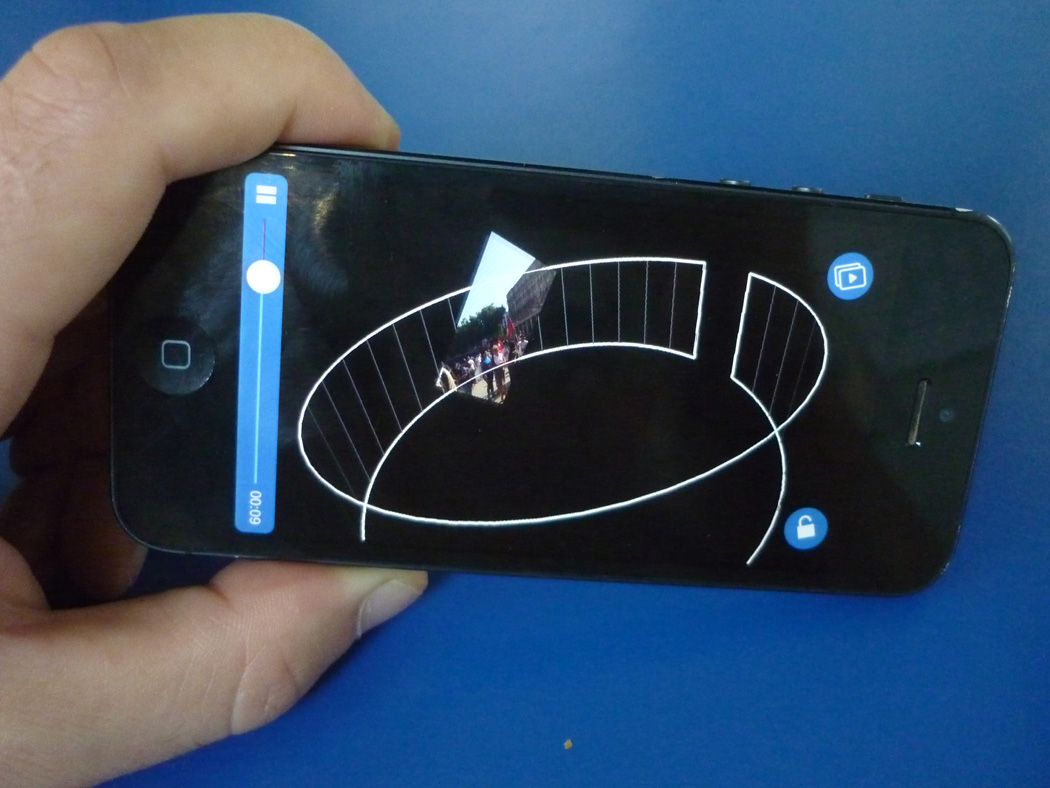Motion Picture 2.0
A New Recording Technology
The project »Motion Picture 2.0« was developed by the ZKM | Institute for Visual Media and is supported by the Science Year 2014 – The Digital Societ of the Federal Ministry of Education and Research.
The Smartphone has altered our everyday life’s habits, particularly it is transforming our stance towards production and perception of image and film. In the light of radical technological changes in image recording and reproduction currently underway, the ZKM has developed an application facilitating new approaches to images. By means of the newly developed application, your own Smartphone simply and rapidly becomes a carrier medium for a new recording technology: with the new method »Motion Picture 2.0«, the camera orientation is recorded whilst recording. Consequently, the image window can be reproduced when playing. With traditional cameras, by contrast, camera orientation during film recording is lost. In conventional reproduction, the recorded film is played on a static monitor or television. As a result, the film’s reception remains physically passive, viewer orientation is independent of camera orientation, which has recorded that which has been shown.
Through this newly developed technology, the viewer’s habitual modes of reception are surprised. Here, the viewer does not passively perceive the video material from the vantage point of his sofa in a forward-gazing position, but is rather integrated physically. »Motion Picture 2.0« sets in motion entirely new effects of that which is shown. Ideally, orientation-true video recording with »Motion Picture 2.0« takes place in the ZKM_PanoramaLab. In this panoramic projection environment, the physical aspect of image reception – which, with the concept of »embodiment« adopts a current thesis in cognitive research – is experienced with one’s own body.
Though the videos produced with this application can already be viewed on mobile end devices in a simulation of orientation-true and close physical viewer integration, the full effects of this new technology only really come into their own in the context of the Lab.
Project website
Credits
- Project management
